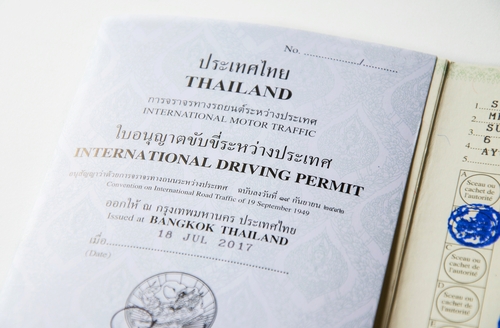Introduction
In today's digital age, Visit this site innovation plays an important function in the management of different aspects of our lives. One area where technology has shown impressive potential remains in the management of Internally Displaced Persons (IDPs). The predicament of IDPs typically develops from conflict, natural disasters, or systemic discrimination, leading to considerable obstacles in providing them with needed assistance. This short article explores how innovative innovations can help resolve these difficulties, streamline processes, and enhance the overall management of IDPs.
Utilizing Technology To Manage IDPs
The management of IDPs needs robust frameworks that can adjust to their evolving needs. Making use of innovation to handle IDPs makes it possible for companies and governments to respond more effectively by leveraging information analytics, mobile applications, and blockchain innovation. Through these tools, stakeholders can offer better services, track displacement trends, and enhance communication with affected populations.
1. Comprehending the Concept of IDPs
Internally Displaced Persons (IDPs) refer to people who have been forced to flee their homes however stay within their country's borders. Unlike refugees who cross global limits, IDPs face special difficulties connected to legal protections and access to support. Understanding these dynamics is necessary for effective management.
1.1 The Causes of Internal Displacement
Internal displacement can come from different aspects:
- Armed Dispute: Continuous wars or civil unrest lead lots of people to leave their homes. Natural Catastrophes: Earthquakes, floods, and other disasters force neighborhoods to evacuate. Development Jobs: Facilities projects may displace populations without adequate compensation or resettlement plans.
1.2 The Impact of Internal Displacement on Communities
The impacts on displaced persons are extensive:

- Loss of Livelihoods: Numerous lose their jobs and ways of support. Psychological Injury: The experience of displacement can lead to psychological health issues. Social Fragmentation: Neighborhoods may become fragmented as families are separated.
2. Present Challenges in Handling IDPs
Managing IDP populations provides numerous obstacles for governments and humanitarian companies:
2.1 Absence of Accurate Data
Without precise data about the number and area of IDPs, it becomes challenging to designate resources effectively.
2.2 Inadequate Interaction Channels
Many displaced people lack access to dependable details regarding offered support services or safe areas.
2.3 Coordination Amongst Stakeholders
Multiple companies often work independently; coordination is vital for reliable reaction efforts.
3. Role of Technology in Addressing Challenges
Technology offers services that can assist get rid of these hurdles:
3.1 Data Analytics for Better Decision-Making
By making use of information analytics platforms, companies can evaluate trends in displacement patterns, helping them make informed choices about resource allocation.
3.2 Mobile Applications for Real-Time Info Sharing
Mobile apps can help with communication in between displaced persons and help companies-- providing updates on readily available resources or safe locations.
3.3 Blockchain Technology for Transparency
Blockchain technology cultivates transparency by securely recording deals related to aid circulation-- ensuring that resources reach those who need them most.
4. Case Studies Showing Effective Usage of Technology
Several initiatives worldwide display how technology has actually successfully handled IDP crises:
4.1 The United Nations' Use of Geographic Info Systems (GIS)
The UN employs GIS innovation to map displacement patterns precisely; this aids in preparing interventions efficiently.
4.2 The Function of Social Network Platforms in Crisis Communication
Social media has shown indispensable for real-time updates throughout crises-- assisting firms communicate rapidly with affected populations.
5. Methods for Implementing Technology Solutions
To successfully apply technology in managing IDP circumstances:
5.1 Engaging Local Communities
Local communities must be involved in developing tech solutions; they comprehend their requirements best.
5.2 Guaranteeing Accessibility
Ensuring that technological services are accessible to all segments of the population is essential-- consider language barriers and literacy levels.
6. Future Trends in Technological Solutions for Handling IDPs
As we look ahead:
6.1 Expert system (AI) Enhancements
AI could even more improve predictive analytics regarding displacement patterns-- assisting companies anticipate crises before they escalate.
6.2 Increased Collaboration Throughout Borders
Global collaboration might lead to shared databases and resources that enhance responses throughout areas experiencing comparable challenges.
7. Conclusion: A Call for Ingenious Approaches
The management of Internally Displaced Individuals requires a multi-faceted method integrating advanced technological solutions customized specifically for their needs-- making it important for federal governments and organizations alike to invest time and resources into these innovations.
FAQs
Q1: What need to I do if I am an internally displaced person? A1: Look for help from local NGOs or federal government companies committed to assisting displaced individuals find shelter and resources.
Q2: How does innovation improve communication amongst help agencies? A2: Innovation improves information sharing through platforms that enable real-time updates regarding readily available services or modifications in conditions impacting IDPs.
Q3: Can I obtain a global chauffeur's license online while being displaced? A3: Yes! Numerous nations provide online services where you can make an application for a worldwide driver's license even if you're currently displaced; simply examine your local regulations!
Q4: What are some examples of mobile apps created for IDP assistance? A4: Apps like "Refugee Buddy" deal details on offered services while "Disaster Emergency" supplies informs during crises impacting your area!
Q5: How does blockchain guarantee openness in aid distribution? A5: Blockchain records deals securely so that every help circulation is traceable; this reduces corruption dangers making sure resources reach those who need them!
Q6: Exist particular innovations being established for usage in Spain concerning internal displacement? A6: Yes! Numerous regional NGOs are working together with tech companies to produce applications concentrated on assisting internally displaced individuals specifically within Spain's distinct context.
In conclusion, using innovation uses extraordinary opportunities when managing Internally Displaced Individuals effectively-- it's not merely about reacting faster however tailoring options that respect human self-respect while dealing with complex logistical difficulties head-on!